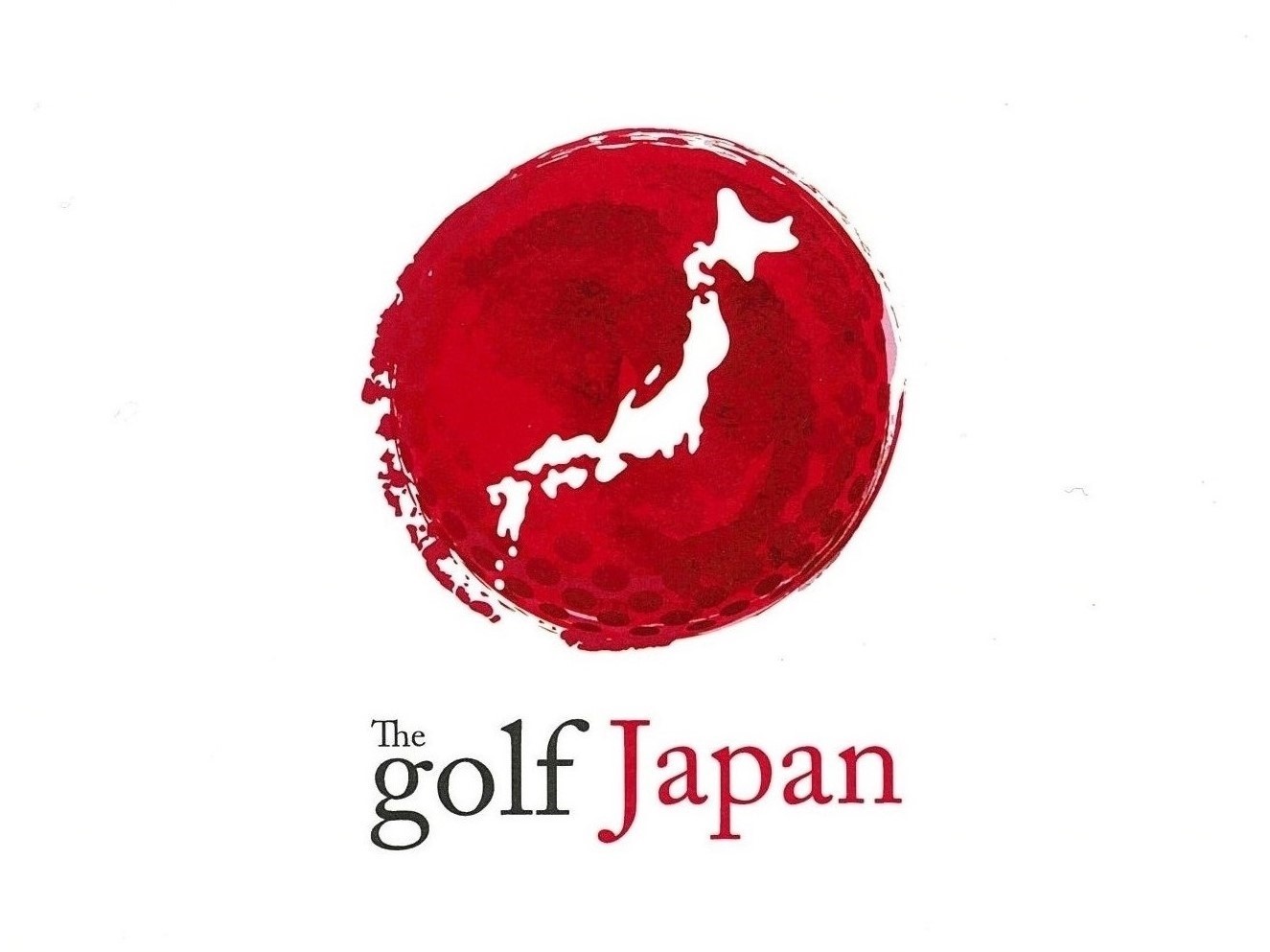n this post, we will introduce you about Tanabata (Star Festival).
What is Tanabata (七夕)?
Tanabata is one of the oldest Japanese festivals, and is celebrated on July 7. On the night of July 7 every year, people still have the custom of hanging strips of paper with wishes written on them on bamboo leaves and praying to the stars.
July 7 of the lunar calendar is at the end of the current August. Some regions hold Tanabata festivals in August, a month later than the current calendar date. The famous Sendai Tanabata Festival (Miyagi Prefecture) is also held around August 7 every year. At the Sendai Tanabata Festival, the shopping streets are decorated with gorgeous bamboo decorations and streamers that compete for attention.
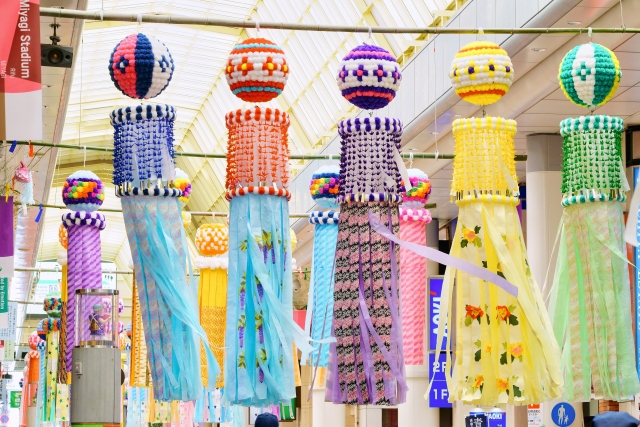
The Origin and History of Tanabata
Tanabata is said to have taken its present style from a combination of several Japanese and Chinese events.
① China – “Hikoboshi & Orihime” legend
② China – “Kokkouden” event
③ Japan – “Tanabata” event
Then, let’s see what they are.
“Hikoboshi & Orihime” legend
This is famous legend story that two stars, Hikoboshi (Altair) and Orihime (Vega) can meet each together only once in a year, on the night of July 7.
Orihime was a beautiful talented weaver, and Hikoboshi was a young diligent cow herder. They fell in love and married, but then they became obsessed with each other and stopped working. The Heaven Emperor got furious and separated the two to opposite sides of the Milkey Way. However, when he saw their grieving, he allowed them to cross the river to meet each other only on July 7.

Kikkouden
Kikkouden is a Chinese custom to wish for improvement in sewing and calligraphy on the night of July 7, in honor of the weaver princess Orihime, who is a skilled weaver.
The word “Kikkouden” means “to pray for skillful techniques” and was introduced to Japan in the Nara period (710-794). The techniques include kemari (ball game), gagaku (ancient Japanese court music), and waka (Japanese poetry), which are part of the court culture.
The Reizei family of Kyoto, whose ancestors include the Heian and Kamakura period poet Fujiwara no Teika, still have the event “Kikkouden”. The family offers musical instruments such as the koto (Japanese harp) and biwa (Japanese lute), vegetables, fruits, threads of five colors and cloth to the stars, and after enjoying a performance of gagaku (court music), they compose and exchange waka poems. I admire the spirit with which this event has been carried on since the Heian period without ceasing.
Tanabata (棚機)
In Japan, the purification ceremony has been held on July 7 of the lunar calendar since ancient times. Before welcoming the ancestors on the Bon festival, Tanabatatsume would stay in a hut by the water from the evening of July 6th to the 7th to weave cloth for the altar of the gods. On the 7th, the cloth is washed into the sea or river, and the gods are asked to bring back the filth of the villagers. The loom used at this time was called a “tanabata (棚機)” loom, which is where the word “tanabata (七夕)” comes from.
Decorations for Tanabata
Decorated bamboo branches are often seen around town as Tanabata approaches. This custom of decorating bamboos is unique to Japan, and its history is surprisingly new, having been practiced since the Edo period (1603-1868). Decorations vary from region to region.
Tanzaku
The thin, long rectangular strips of multicolored paper is called Tanzaku. On the tanzaku, people write their wishes and hang them on the bamboo leaves.
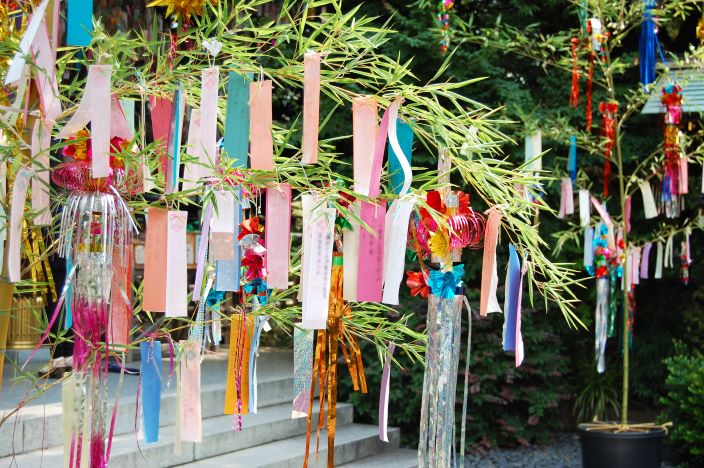
Fukinagashi
Fukinagashi represents the weaving threads or the weaver. It is decorated to wish for the improvement of sewing.
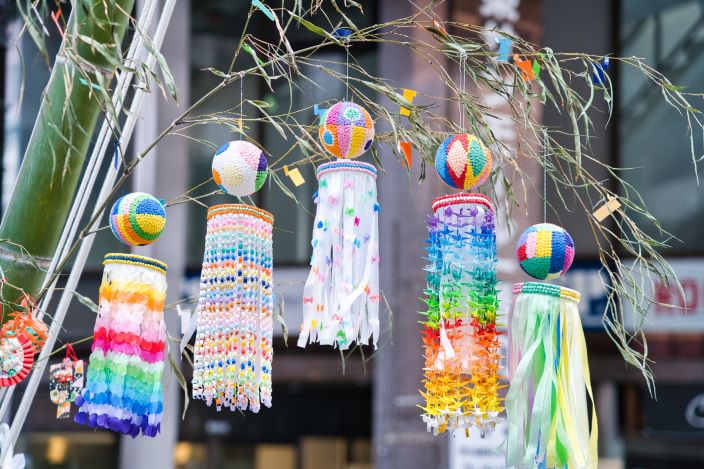
Folded paper cranes
The symbol of longevity, the crane, is folded with origami paper to wish for longevity and longevity. Some people make 1,000 paper cranes.
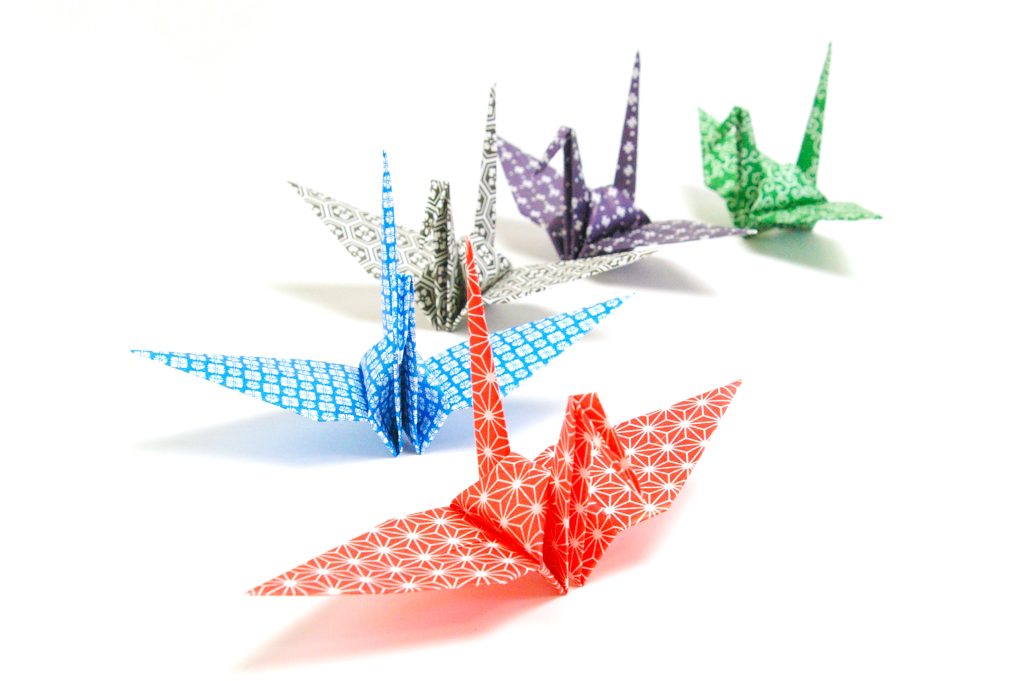
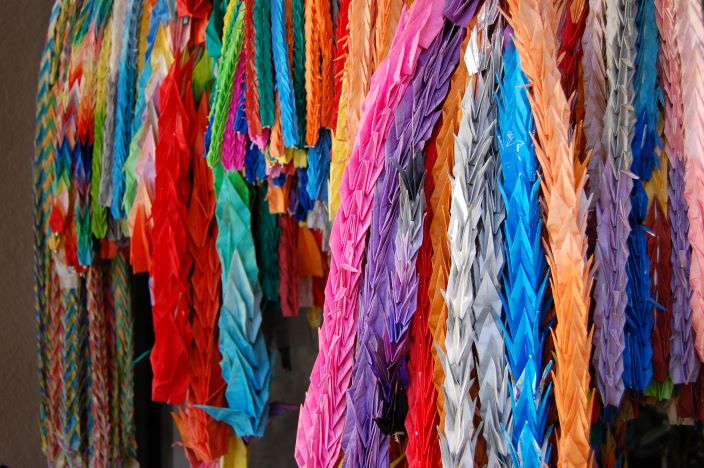
Kamigoromo
A kimono is made of origami. It is modeled after the kimono woven by Tanakizume, and is meant to improve one’s sewing skills, ward off bad luck, and wish for the healthy growth of children.
Kinchaku (purse)
Kinchaku, which used to be used to store money, is a decoration that wishes for good luck in money. Tie it tightly to prevent money from escaping.
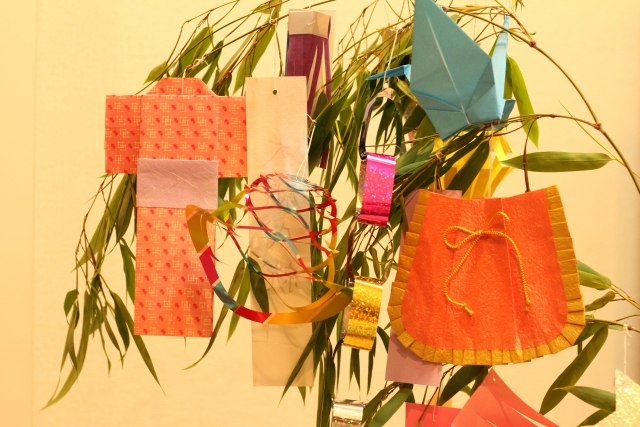
Other than Tanabata ornaments, another famous custom nowadays is to eat Somen noodles (fine noodles) on Tanabata. It is said that the reason is because the long and thin noodles of Somen noodles look like the Milky Way, or because they look like weaving threads and wish for the improvement of revisiting, or because they are easy to eat and rich in nutrients, so people pray for their health.
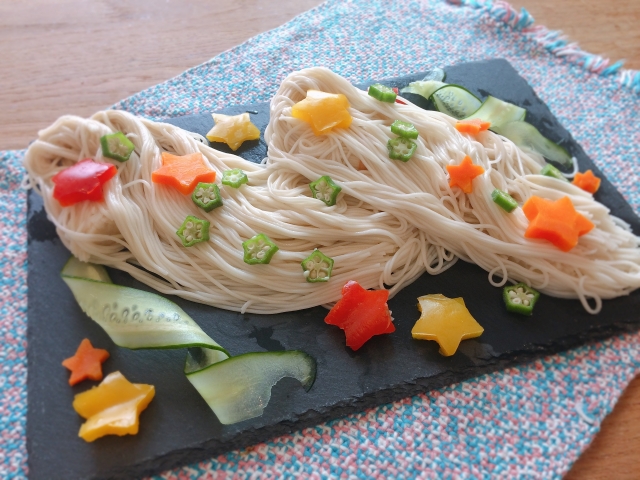
How was it?
In this post, we introduced the history, origin, and current customs of “Tanabata” on July 7. May your Tanabata wishes come true.
